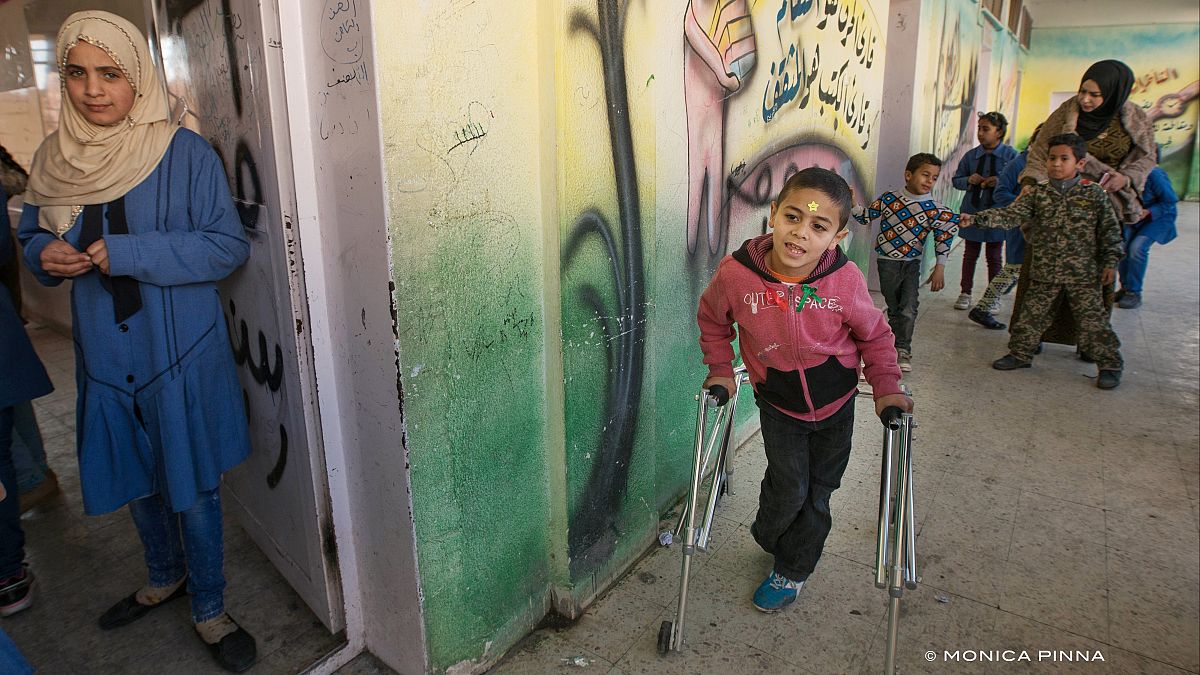In this episode of Aid Zone Euronews' Monica Pinna travels to Jordan to look at how the EU and other international organisations are supporting the country's efforts to integrate Syrian refugee children into the national school system.
Jordan continues to integrate Syrian refugee children into its national school system. Despite that, around 40 percent of child refugees in the country still don't have access to education and remain outside the classroom. That percentage gets much higher for children with disabilities.
Mafraq is one of the three Jordanian governorates with the highest number of registered Syrians. Local schools have been trying to cope with the high number of refugee children seeking an education, including those with disabilities.
Abd Al-Rahman is 8-years-old and has cerebral palsy affecting his ability to walk. This is his first year at school.
"What I love most is science. Science is great. I love everything that is related to it," he says.
At Al Hamra school, Abd Al-Rahman is treated as any other child, even if he has different requirements to the other children. The school is part of an inclusive education programme implemented by Mercy Corps, an organisation financed by the European Union.
Abd Al-Rahman was unable to gain entry into a school for two years as there was nowhere equipped to assist him.
"It was hard to get him to school because he is not capable of walking and it’s very difficult for us to take him to school and bring him back. But he has to study!” Abd Al-Rahman's grandmother says.
Maisa Asmar, Mercy Corps
“We work with schools through providing them with assistant teachers, we also provide them with furniture and assistive technology in order to improve the quality of education all children receive, including children with disabilities. Currently around 300 children are receiving rehabilitation sessions.”
The figures for Syrian refugees with disabilities in Jordan are unclear. Estimates say up to 15,000 might be children, with only 3 percent receiving an education. The reasons being not only the capacity of the national education system, but also the challenging socio-economic conditions and poverty which refugees find themselves in.
The European Union has mobilised some €11 billion euros since the beginning of the Syrian crisis and that budget is growing. During a visit to another EU financed school in Amman, the EU Commissioner for Humanitarian Aid told Euronews that Europe is increasing its budget for education in Jordan.
Christos Stylianides, EU Commissioner for Humanitarian Aid
“The education in emergencies is the most underfunded field in our humanitarian aid and this is why I have already increased ten times the budget for education in emergencies.
“Next year all humanitarian projects have to include specificities about disabled persons."
At an inclusive school in Irbid in the north of Jordan close to Syria, Dareen is part of a team of around 160 assistant teachers for children with disabilities. They have been trained by Mercy Corps and are working in more than 40 schools across the country.
With the help of an interpreter, Dareen is raising awareness about people with disabilities by teaching sign language to students who have normal hearing.
Dareen Ahmad Makki, Assistant Teacher, Mercy Corps
_"The first time I came to school I was worried about how I could communicate with students and teachers, but since the first day in the classroom it was really easy. My body language worked great and the students loved it !"
_
“My cousin is deaf and I was not able to communicate with him. But now we talk to each other,” said one student.
Jordan has recently adopted a new law on the rights for persons with disabilities and a ten years strategic plan that will replicate the best practices across the country.
